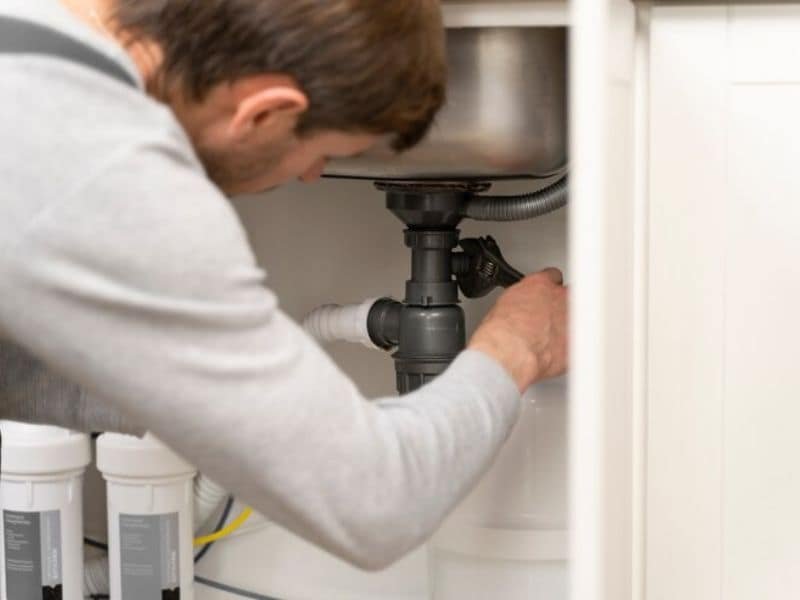Installing a sump pump typically costs homeowners between $642 and $2,101, with a national average of $1,349 for complete installation and replacement services. Costs vary widely—from as low as $100–$500 for a DIY under‑basin kit to $4,000 or more for complex whole‑house setups—depending on pump type, installation complexity, and additional features like battery backups. Premium systems and professional labor can push total expenses into the $1,200–$2,500 range, whereas simpler pedestal pumps without backup systems may cost under $800 when installed by a pro. Labor rates generally fall between $45 and $200 per hour, with typical service charges of $100–$600 for a standard installation, exclusive of parts. The permit may add 10-30% to the factoring, basin excavation, electrical hooks, UPS, and other additional as alarm or water of powered backups to your base price, which may make advance planning a necessity.

Factors Influencing Sump Pump Installation Cost
READ MORE: Install Water Filtration System
Type of Sump Pump
Submersible pumps, which sit inside the sump basin and run quieter, are more expensive—unit prices start around $200 and can climb to $1,000+ for high‑capacity models. Pedestal pumps, with motors above the basin, are budget‑friendly options often priced between $100 and $300, but they’re louder and less durable over time.
Location and Accessibility
Installation in an easily accessible, unfinished basement corner typically incurs lower labor charges, while tight crawl spaces or finished basements can significantly raise labor time—and thus cost—by up to 50%. Excavating concrete slab floors to install a basin can add $200–$500 in jackhammering and concrete repair fees.
Pump Capacity and Quality
Higher‑capacity pumps (measured in gallons per hour, GPH) and rugged cast‑iron or stainless‑steel components command premium prices $300–$800 for the unit alone. Cheaper plastic‑frame pumps may cost under $150, but they typically have shorter lifespans and less warranty coverage.
Additional Features (Battery Backup, Alarm)
A battery backup system provides protection during power outages, with kits ranging from $150–$600, plus $200–$400 in extra labor to install wiring and battery racks. Water‑powered backup pumps cost $300–$900 and use municipal water pressure instead of electricity, but they require dedicated plumbing taps and specialized valves. Alarms that alert you to high‑water conditions or pump failures add $50–$150 for sensors and installation.
Labor and Permits
Plumbers and waterproofing specialists charge between $50 and $150 per hour, depending on region and expertise. Permit costs vary by municipality but typically run $50–$200, often requiring an inspection fee to ensure proper discharge location and check‑valve installation.
Average Costs by Pump Type
Pedestal vs Submersible Pumps
- Pedestal pumps installed professionally average $500–$800, including parts and labor.
- Submersible pumps installed professionally average $1,000–$2,100, reflecting higher equipment and labor costs.
With Battery Backup
Adding a battery backup can raise your total installation cost to between $1,500 and $3,000, depending on battery size and installation complexity.
Without Backup
A basic submersible pump installation without backup ranges from $642 to $1,349, per HomeAdvisor data.
Regional Cost Variation
Labor and material costs differ by region:
- Northeast and West Coast: Higher labor rates push average costs to $1,400–$2,500.
- Midwest and South: Lower labor rates and permit fees can keep total installation under $1,200.
Urban areas often add 10–20% premium due to higher living costs, while rural installations may involve extra travel charges for technicians.
Cost Breakdown: Parts vs. Labor
Parts Costs
- Pump unit: $100–$800, depending on type and capacity.
- Basin and cover: $50–$250 for quality polyethylene or fiberglass model.
- Check valve and discharge piping: $20–$100 in PVC or metal fittings.
Labor Costs
- Basic install: $300–$600, covering 2–4 hours of labor.
- Complex install (slab cut, backup, alarms): $600–$1,200, requiring 6–10 hours of work.
DIY Installation vs. Professional
DIY sump pump kits can cost $100–$500 for parts, saving $300–$1,000 in labor, but require plumbing, electrical, and concrete‑cutting skills to avoid leaks and code violations. Professional installation provides warranties, ensures proper venting and check‑valve placement, and handles permits—worth the extra cost for most homeowners.
Additional Installation Requirements
Basin Installation
Digging and setting the sump basin into soil or through concrete slab adds $100–$500 to heavy equipment and concrete patching costs.
Discharge Line and Check Valve
Routing a PVC discharge line to an exterior drain or daylight requires proper slope and check‑valve placement; expect $50–$200 in materials and up to 2 hours of labor.
Electrical Work
Hard‑wiring submersible pumps into a dedicated circuit or installing a battery backup charger typically costs $150–$400 for an electrician, including materials.
Maintenance and Operating Costs
Annual maintenance—inspections, cleaning, and minor part replacements—runs $75–$200 if done professionally. Homeowners can perform simple checks themselves, reducing costs to under $50 per year, but should budget for eventual pump replacement every 5–10 years at around $500–$800 for parts and labor.
Long‑Term Savings and Protection Benefits
Investing in a quality sump pump and professional installation can prevent basement flooding—avoiding $10,000+ in water damage repairs—and may lower homeowner’s insurance premiums by 5–10% in high‑risk flood zones.
Tips for Reducing Installation Costs
- Bundle Services: Combine sump pump installation with other waterproofing tasks to negotiate package rate.
- Off‑Season Scheduling: Spring and fall often have lower demand for plumbers, leading to reduced labor rates.
- Obtain Multiple Quotes: Compare at least three licensed contractors to ensure competitive pricing.
- DIY Preparations: Pre‑dig the basin hole and clear the area to minimize crew prep time.
When to Replace vs. Install New
If your existing pump shows rust, intermittent operation, or fails to activate in tests, replacement—usually $400–$700—is more cost‑effective than a full system install; new installations should be considered when renovating or after multiple pump failures.
Conclusion
Understanding sump pump installation costs—averaging $642–$2,101 for pro service—helps homeowners budget accurately and choose the right system for their needs. By weighing pump types, backup options, and labor factors, and by comparing multiple quotes, you can protect your home from flooding without overspending. Proper maintenance will extend pump life, maximize ROI, and provide long‑term peace of mind against water damage.

